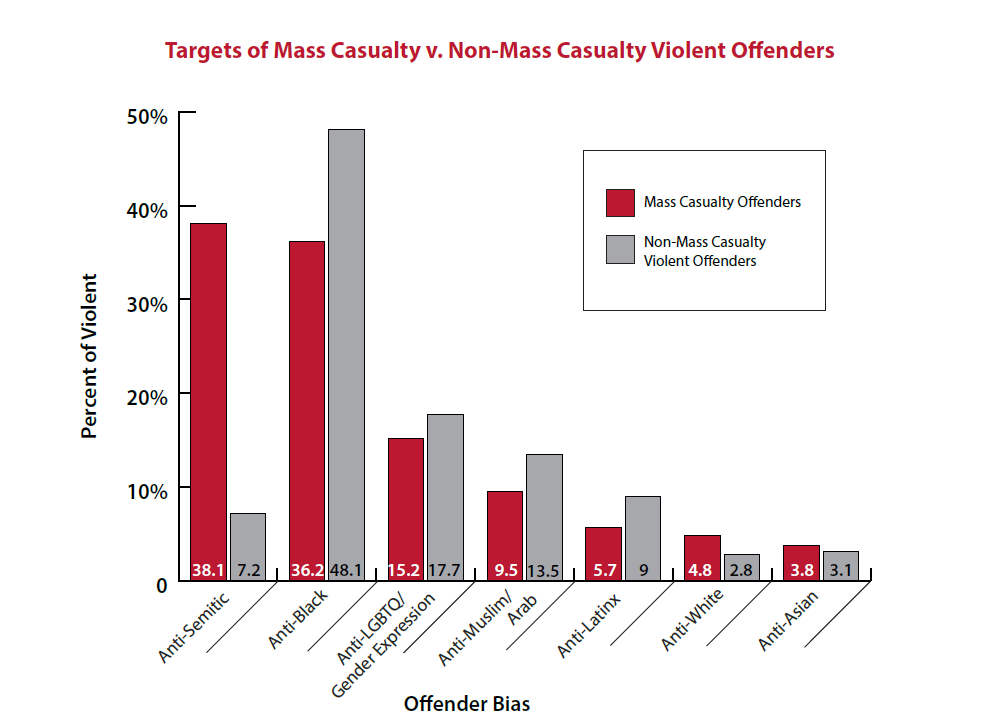 The victims who are targeted in mass casualty events differ significantly from those who are targeted in typical hate crimes (violent and non-violent), according to a new START research brief.
The victims who are targeted in mass casualty events differ significantly from those who are targeted in typical hate crimes (violent and non-violent), according to a new START research brief.
While anti-Semitic perpetrators account for only 10.4 percent of all offenders in the BIAS data, anti-Semitic perpetrators comprise over a third (38.1%) of the offenders who planned or committed mass casualty attacks. And while Anti-Black offenders comprise the largest percentage of typical hate crime perpetrators (48.1%) in the database, they make-up fewer (36.2%) of the mass casualty offenders in BIAS.
BIAS data show that the situational characteristics of mass casualty attacks, as well as the profiles of the perpetrators themselves, also differ from other violent hate crimes in important ways.

The brief, "Characteristics and Targets of Mass Casualty Hate Crime Offenders" is available on the START website. It is the third in a series of briefs exploring the new BIAS dataset. Previous briefs will explore motivations and characteristics of hate crime offenders and violent hate crime offenders. START plans to release the full BIAS dataset in early 2021.
Follow our Radicalization and Disengagement (RaD) team on Twitter for more: @RaD_UMD.
